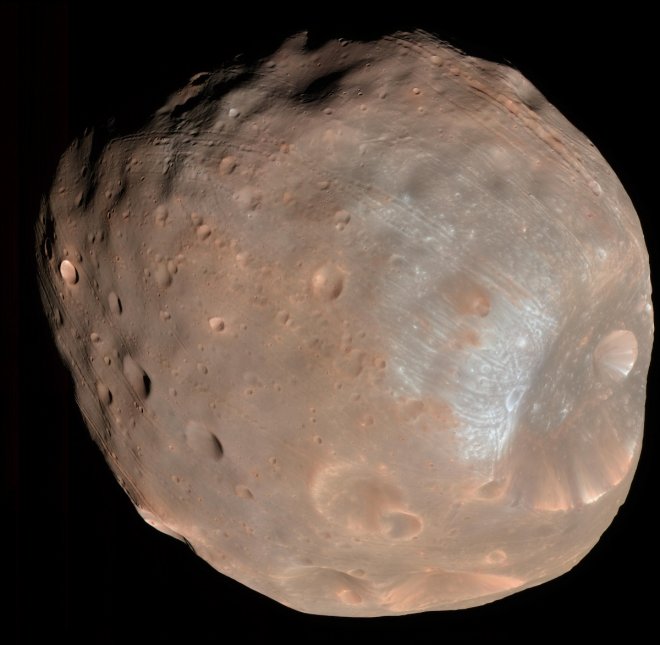
NASA has found that powerful solar eruptions could electrically charge the Martian moon Phobos to hundreds of volts. This could affect the sensitive electronics used in the missions to the red planet and its moon.
The scientists had earlier planned to use Phobos and another Martian moon Deimos as its initial base for human exploration of Mars. The weaker gravity of these moons could have helped easier landing and takeoff of the spacecraft carrying astronauts and supplies. The astronauts had also planned to operate the robotic missions to Mars from these moons to avoid the time lag faced by the earth-based scientists.
William Farrell of NASA's Goddard Space Flight Center, Greenbelt, Maryland wrote in his research paper published in online journal Advances in Space Research on Oct. 3, "We found that astronauts or rovers could accumulate significant electric charges when traversing the night side of Phobos- the side facing Mars during the Martian day. While we don't expect these charges to be large enough to injure an astronaut, they are potentially large enough to affect sensitive equipment, so we would need to design spacesuits and equipment that minimizes any charging hazard."
Deimos also has conditions similar to the Phobos, having no atmosphere and directly exposed to the solar wind which contains plasma. Plasmas are the electrically charged conducting gases which are ejected from the surface of the sun at a speed of around one million miles per hour.
The solar wind strikes on the side of the Phobos which experiences day-long results in charging of the region. It would also result in a void in the dark region which does not receive the solar wind. The charges from the plasma would be conducted to the solar wind exposed surface as ions and electrons. The lighter electrons flow to the region that experiences night time while the heavier ions stay in the daytime region.
Farrell wrote, "The electrons act like fighter jets- they are able to turn quickly around an obstacle – and the ions are like big, heavy bombers- they change direction slowly. This means the light electrons push in ahead of the heavy ions and the resulting electric field forces the ions into the plasma void behind the Phobos, according to our models."
It means the astronauts who walk in the dark regions of the moon would experience high power electric charges which would be transmitted through their spacesuits. The friction which is formed from the astronaut walks is capable of transferring the charge from the dust and rocks of the moon to the astronauts. This could result in charge accumulation in the astronaut's spacesuit. The charges would not flow back to the surface as it is not conductive in nature. The accumulated charges would be conducted to any metal which is in contact to the astronauts. It could also result in damage to electronic equipments used in Martian missions.
The scientists have calculated that the Teflon space suits which were used for the Apollo lunar mission were capable of conducting ten thousand volts of electricity through it. However, the astronauts who explore the plasma prone regions would not face the problem of charge accumulation as the electrically conducting solar wind and solar ultraviolet radiation would remove those charges.
The new finding has backfired the planning for a Martian basement camp in the Mars' moons. However, the NASA and other space agencies including the SpaceX and the Lockheed Martin are moving on with their plans to sent humans to Mars by 2022.









